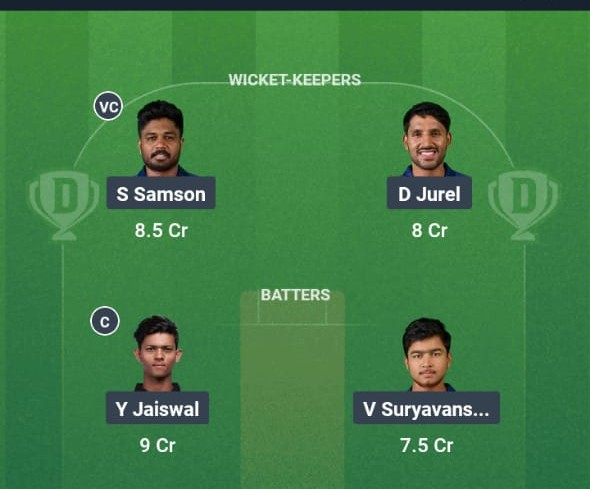Dream11, India’s premier fantasy sports platform, has transformed how fans engage with sports, particularly cricket, by blending passion with strategy. Launched in 2008 by co-founders Harsh Jain and Bhavit Sheth, Dream11 allows users to create virtual teams of real players, earning points based on their on-field performances in live matches. With over 250 million registered users as of 2025, Dream11 dominates the Indian fantasy sports market, holding a staggering 90% market share. This article explores Dream11’s journey, business model, legal battles, technological innovations, marketing strategies, and future prospects.
The Genesis of Dream11
Dream11 was born from the vision of two childhood friends and ardent sports enthusiasts, Harsh Jain and Bhavit Sheth. Harsh, an alumnus of Columbia Business School and the University of Pennsylvania, was inspired by the absence of a cricket-focused fantasy platform in India during the inaugural Indian Premier League (IPL) in 2008. Bhavit, with an MBA from Bentley University and a diploma in e-commerce strategies from Harvard, brought operational expertise to the venture. Initially a side project, Dream11 was bootstrapped while the duo ran a services agency, pivoting until they introduced a freemium model in 2012 that catalyzed its growth.
By 2014, Dream11 had 1 million registered users, growing to 2 million in 2016, 45 million in 2018, and over 220 million by 2024. In April 2019, it became India’s first gaming unicorn, valued at $8 billion by November 2021. Its parent company, Dream Sports, is reportedly eyeing a U.S. IPO, potentially valuing the company at $6 billion.
How Dream11 Works
Dream11 is a skill-based fantasy sports platform where users create virtual teams for sports like cricket, football, kabaddi, basketball, hockey, volleyball, handball, rugby, and baseball. The process is straightforward:
- Select a Match: Users choose an upcoming match from various leagues, such as the IPL, Big Bash League, or NBA.
- Create a Team: Using a budget of 100 credits, users select 11 players (for cricket) based on their form, stats, and match conditions. In-form or star players cost more credits.
- Join Contests: Users can enter free or paid contests, with entry fees typically ranging from ₹30-60. Dream11 allows up to 20 teams per user in select large contests.
- Earn Points: Points are awarded based on players’ real-life performances (e.g., runs scored, wickets taken, goals made). The captain earns 2x points, and the vice-captain 1.5x.
- Win Prizes: Around 50% of participants win prizes, with top ranks receiving the largest shares. Winnings can be withdrawn instantly via IMPS or within three days via NEFT, with a minimum withdrawal of ₹200.
Dream11 emphasizes skill over luck, requiring research, analytical thinking, and strategic planning, which has been legally upheld as a game of skill by Indian courts.
Business and Revenue Model
Dream11 operates on a platform-fee model, taking 15-25% of the total prize pool from paid contests as its revenue. Unlike ad-driven platforms, it relies solely on contest entry fees. In FY2020, Dream11 reported a net profit of ₹181 crore, reversing a ₹87 crore loss from FY2019. By FY2021, revenues reached ₹2,554 crore with profits of ₹327 crore, despite heavy advertising spends, including ₹222 crore on IPL sponsorship and ₹1,250 crore on overall promotions. In FY2023, Dream Sports recorded a profit after tax of ₹188 crore, up 32.4% from ₹142 crore in FY2022.
The company has raised significant funding, including $100 million from Tencent in 2018, $60 million from Steadview Capital in 2020, and $400 million in a secondary round in 2021, valuing Dream Sports at $5 billion. Its financial success stems from high user engagement, strategic partnerships, and a scalable tech infrastructure.
Legal Battles and Legitimacy
Dream11 has faced scrutiny for its proximity to gambling, a sensitive issue in India. In 2017, a case filed in the Punjab and Haryana High Court challenged its legality. The court ruled that Dream11 is a game of skill, requiring “superior knowledge, judgment, and attention,” a verdict upheld by the Supreme Court. This landmark ruling legitimized fantasy sports in India, distinguishing them from gambling. However, states like Assam, Andhra Pradesh, Telangana, Odisha, Sikkim, and Nagaland have banned Dream11, citing local gambling laws.
In October 2021, Karnataka briefly banned online gambling, forcing Dream11 to suspend operations, but the Karnataka High Court reversed the ban in February 2022. In 2025, Dream11 filed a writ petition in the Bombay High Court against a tax notice alleging GST evasion, arguing that the 28% GST on bet values was misapplied. The lack of a national regulatory framework continues to create legal grey areas, with states like Gujarat considering new regulations to address financial risks for young players.
Dream11 adheres to the Federation of Indian Fantasy Sports (FIFS) guidelines, ensuring transparency and compliance. Its “Fair Play” feature allows users to download competitors’ teams post-deadline, reinforcing trust. Despite allegations of bots or unfair practices on Social Media platforms, Dream11 maintains that its contests are transparent, with winnings subject to TDS for amounts above ₹10,000.
Technological Backbone
Dream11’s seamless user experience is powered by Amazon Web Services (AWS), enabling scalability, security, and innovation. Handling over 65 billion requests daily and supporting 100+ sporting events, Dream11 uses AWS technologies like Lambda, Elastic Load Balancing, SageMaker, and Shield to manage massive traffic spikes and ensure 99.99% uptime. Its in-house Scaler tool dynamically adjusts resources, reducing costs by 42% with AWS Graviton2 processors. The adoption of React Native for its app has optimized startup times, while Amazon Redshift and Athena power real-time analytics for personalized recommendations.
Dream11’s AI-based Causal Inference Platform drives experimentation, improving payment success rates and user engagement. Its Data Highway project centralizes analytics, providing a 360-degree view of user preferences. These innovations have supported rapid feature rollouts, with small enhancements deployed in 2-3 days and major features in 1-6 weeks.
Marketing and Partnerships
Dream11’s marketing strategy leverages high-profile partnerships and celebrity endorsements. In 2020, it secured IPL title sponsorship for ₹222 crore, replacing Vivo, and became the lead jersey sponsor for the Indian National Cricket Team from 2023 to 2026 for ₹358 crore. It has partnered with leagues like the Caribbean Premier League, Indian Super League, NBA, International Cricket Council (ICC), Pro Kabaddi League, and New Zealand’s Super Smash (extended till 2026).
Brand ambassadors include cricketers like Mahendra Singh Dhoni, who fronted the “Dimaag se Dhoni” campaign in 2018, and seven IPL players in 2019. In 2022, actors Kartik Aaryan and Samantha Ruth Prabhu were roped in, alongside social media star Khaby Lame for IPL promotions. These campaigns, combined with TV ads and digital marketing, have made Dream11 a household name.
Social Impact and Criticism
Dream11’s rise has sparked debates about its societal impact. With 25 crore users growing at 30% annually, critics argue it distracts India’s youth from research, education, and innovation. Stories of overnight wins, like those in Jharkhand, contrast with cases of financial ruin, such as a Maharashtra police officer’s suspension over Dream11-related losses. Financial experts note that Dream11 users outnumber demat account holders, generating significant GST and income tax revenue, which may deter outright bans.
On Social Media Platforms, sentiments are mixed. Some users praise Dream11’s skill-based format, while others allege bots or manipulative practices, claiming 95% of users lose money. These claims lack substantiation, but they highlight the need for regulatory clarity.
Future Prospects
Dream11 aims to onboard 50,000 creators by 2028, focusing on Tier-3 and Tier-4 cities, and expand its sports offerings. Its parent, Dream Sports, is investing in deep tech, with a $10-million AI innovation center to enhance user experiences. The Indian fantasy sports market, projected to reach ₹1,65,000 crore by FY2025, offers immense growth potential. However, regulatory challenges and competition from over 70 fantasy platforms could test Dream11’s dominance.
A potential U.S. IPO could provide capital to fuel global expansion, but Dream11 must navigate evolving tax policies and state-specific bans. By maintaining its user-first culture, leveraging AWS, and innovating with AI, Dream11 is well-positioned to “make sports better” for millions of fans.
Conclusion
Dream11’s journey from a passion project to a global fantasy sports leader is a testament to its founders’ vision and technological prowess. By capitalizing on India’s cricket craze, navigating legal hurdles, and forging strategic partnerships, it has redefined fan engagement. While challenges like regulation and public perception persist, Dream11’s data-driven approach and robust infrastructure ensure it remains a game-changer in the fantasy sports industry. For fans, it’s more than a game—it’s a chance to live the sport they love.















Leave a Reply